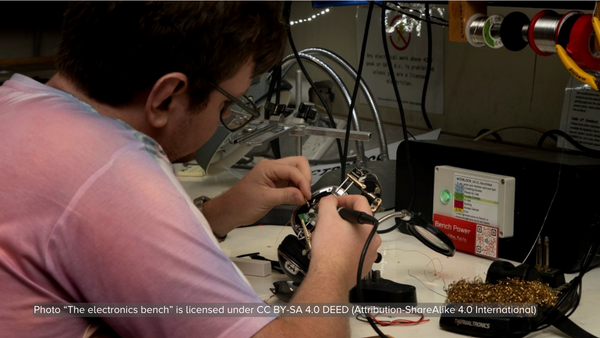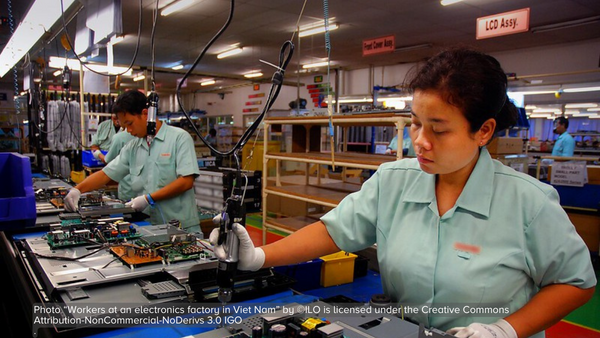A recent report by labour rights organisation Cividep shows that in the electronic sector wages are still below the living wage calculations, even if they seem to be comparatively better than in other manufacturing sectors such as the garment sectors. Labour rights violations were reported by the interviewed workers. Especially the lack of collective bargaining agreements and the absence of any other mechanism through which workers can assert their rights in any of the factories should be of concern. A comparison of the results of this study and research conducted in 2006 shows that the industry still does not engage with any external bodies on human resources issues or their CSR practices.
Although wages in the electronic sector seem to be comparatively better than in other manufacturing sectors such as the garment sectors, they are still below the living wage calculations, according to Cividep in its report 'Corporate Geography, Labour Conditions and Environmental Standards in the Mobile Phone Manufacturing Industry in India'. Labour rights violations were reported by the interviewed workers. Especially the lack of collective bargaining agreements and the absence of any other mechanism through which workers can assert their rights in any of the factories should be of concern. A comparison of the results of this study and research conducted in 2006 shows that the industry still does not engage with any external bodies on human resources issues or their CSR practices. The 2006 SOMO report 'The High Cost of Calling. Critical Issues in the Mobile Phone Industry' covered the industry’s top five manufacturers of mobile phones, Nokia, Motorola, Samsung, Sony-Ericsson and LG, comparing the companies’ corporate social responsibility (CSR) policy with the results of SOMO-commissioned field research into the actual conditions at mobile phone factories in China, India, Thailand and the Philippines.
Nowadays, the industry has become much more wary of inquiries into their conduct and to some degree is perhaps also not convinced that engaging with stakeholders is an important component of CSR. Although the companies are better established in India now than they were in 2006, it is still not clear whether their CSR policies, where they exist, are formulated in specific reference to the Indian context, or just reiterate the companies’ global policies.
In 2006, it was evident that most of the companies were heavily reliant on external certifications such as ISO 9000 and 14000 in order to be approved by clients. Yet, the effectiveness of these certification bodies and their process of monitoring of environmental and labour standards is not made transparent through reports, press statements, or in interviews when specifically requested, as in this study, and therefore remains to be proven. The government has also not formulated any protective measures for workers or the environment in the intervening years since 2006 although there were signs of the need for such already in Cividep's previous study.
In order to improve working conditions and companies’ compliance with Corporate Social Responsibility policies, it is necessary to have some form of mobilization among workers to be able to access reliable information on the actual working conditions within factories. Many of the workers are first generation industrial workers and they do not have a benchmark to measure the working conditions against. They are anxious of losing their jobs if they become part of any organising efforts or if they raise their voice against poor workplace standards.
To conclude, efforts need to be made at networking among organisations concerned with labour rights, environmental issues and corporate accountability in order to turn the public eye to the working
conditions of these young workers in the mobile phone manufacturing sector. Moreover, there has to be a concerted attempt to change policy and practices of both the government and companies. The
government should join hands with civil society organisations and labour support groups to convince companies to improve their working conditions. Only then can workplace standards in the mobile
phone manufacturing sector in India be improved.











